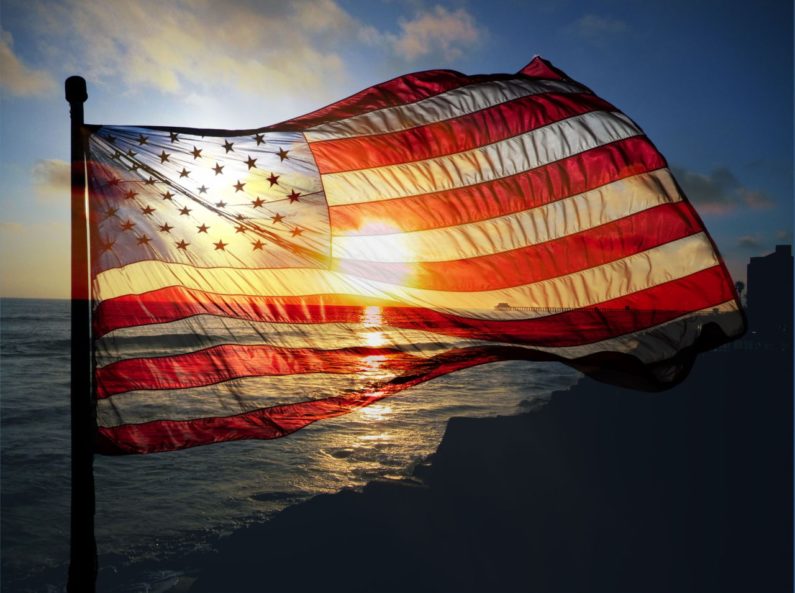July Fourth has always been special. When I was a boy, it meant hot dogs and fireflies, fireworks and fun. As I grew into adulthood it came to have a deeper meaning. Today I find that meaning deepening still further, because to me, there are two July Fourths.
The 1776 Fourth is a celebration of one kind of freedom: liberation from the tyranny of a foreign power, and an assertion of our right to govern our own destiny as an independent people.
The other Fourth, for me, is a celebration of a deeper level of freedom — one not from external oppression but from internal limitation. A celebration not simply of our right but also of our capacity to self-govern.
I love the 1776 Fourth, because I deeply love this country, its inspiring, unnerving, enthralling, and exasperating aspirations for genuine self-determination. I’m ineffably proud to be a part of it, to be of it, woven from its fabric. To be an American.
But I have come even more to appreciate and be in love with that Fourth that came fifty years later, after we had gone through a full half-century of practice in exercising that freedom.
Not the 1776 one — the 1826 one.
On that day, a friendship that helped give birth to this national experiment, and then over the following years seemed to do its level best to pull that experiment to pieces, arrived at its peaceful and magnificent final moments.
The two friends could not have been more different. One, a scrappy lawyer from Massachusetts, was built of rugged New England stock and all the passionately held views that culture represented. The other, a plantation owner from Virginia, was as classic a Southern gentleman as this land ever produced. They were also temperamental opposites; yet they formed a powerful bond.
John Adams and Thomas Jefferson were two of the three principal architects, along with the Philadelphian Benjamin Franklin (hey, whaddya know: Philadelphia sits exactly midway between Massachusetts and Virginia!) of the Declaration of Independence.
Through the years of the “war for independency,” Adams and Jefferson become exceptionally close friends. And before we’d even made it through our first genial George-Washington presidency, the two were presidential rivals and bitterly estranged political enemies. They ran fierce campaigns against each other and spearheaded the opposing camps of the nation’s emerging two-party paradigm. Jefferson even hired a hit-man-journalist to publish vituperative attacks against Adams in a vicious character-assassination campaign — all while Jefferson was serving as his former friend’s vice president.
One assault on Jefferson asserted that if he were elected, “we would see our wives and daughters the victims of legal prostitution” and the United States would become a nation where “murder, robbery, rape, adultery and incest will openly be taught and practiced.”
A counterattack on Adams painted him as a rageful, lying, warmonger, a “repulsive pedant” and “gross hypocrite” who “behaved neither like a man nor like a woman but instead possessed a hideous hermaphroditical character.”
If Washington was the “father of our country,” Adams and Jefferson together fathered its legacy of partisan vitriol and polarized strife.
In 1776, we won the freedom to self-govern. The capacity to self-govern? That would be a longer-term project.
And this is where that other Fourth comes in, and where it serves as such a stunning touchstone of inspiration even today.
Because decades after their political battles had come and gone, the friendship miraculously healed itself, and the two bitter enemies found their way to that most precious of personal and political treasures: the path of civil discourse.
Long after both were out of public life, Adams wrote Jefferson a letter, and they not only reconciled but proceeded to engage in one of the greatest long-running correspondences in American history. At the end, the one in Quincy and the other in Monticello, the two were so psychically connected to one another that they held onto the last fleeting tendrils of life together, the hundreds of miles between them notwithstanding, each saving his terminal breath for the appointed moment.
On July 4, 1826, fifty years to the day after that fateful signing that had first brought the friendship (and the nation) together, Adams died at the age of ninety. His reported last words were “Jefferson lives!” — although his friend the Virginian had in fact slipped his mortal tether just a few hours earlier.
Friends to the last.
Thank you, Tom and Johnny. For the country you left us, the friendship you showed us, and, in your crowning days, the example you set for us.
I promise — we’ll do our best to follow it.
American Flag image from fotolip.com.


AMEN! Let’s put American history back into our school curricula. Seems like the further away we get from our founders’ principles and examples, the more America unravels. May God help us save the Republic…
I’m with you, Elderbro — and there’s so much phenomenally well written American history, too! David McCullough is a gift to the nation.
I never knew this story. I got goosebumps reading it.
Amazing, isn’t it? Talk about being connected. There’s such richness in our history.